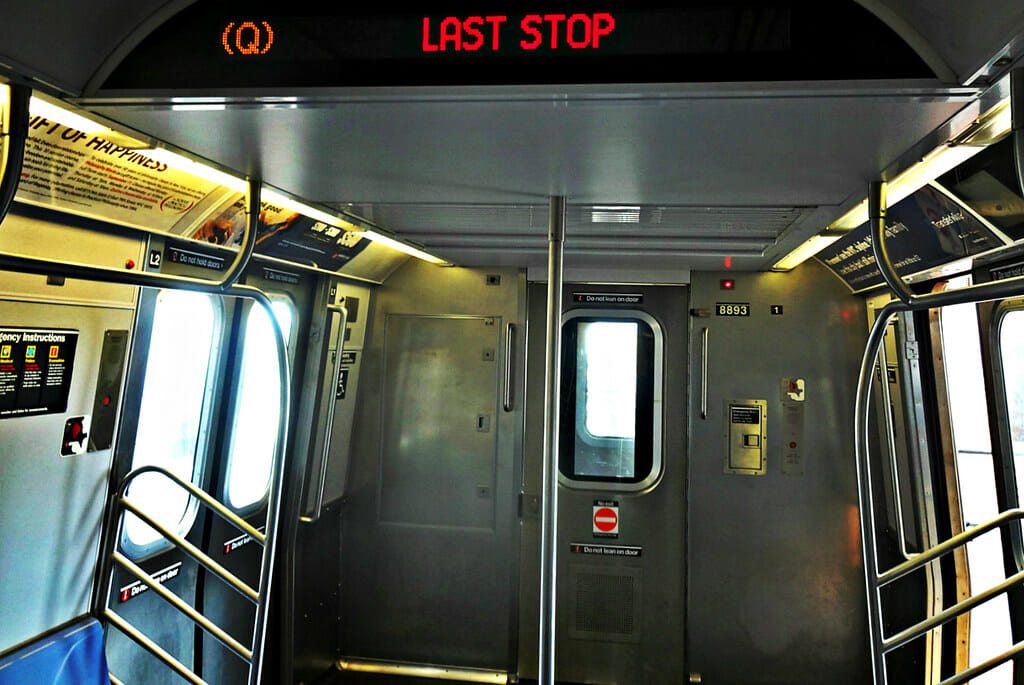Being a bystander on the Q Train…

I was in New York City during Thankgiving week. I stayed in Brooklyn and went into Manhattan by subway train three times.
Looking at the New York City subway as a little girl
I grew up in New York and had grandparents on my father’s side, and aunts and uncles on my mother’s side, who never owned a car and rarely took a cab. I was in the subway regularly from an early age.
By coincidence, my cousin in Brooklyn (mother’s side of the family) lives in a different neighborhood, but on the same train lines as my paternal grandparents. When I started training into Manhattan from my cousin’s, I immediately remembered the route. The last time I was on that line, before I started using the train from this cousin’s (in 2018), was 1976. Even after decades, I remembered the train routes through that part of Brooklyn.
Looking at the New York City subway as a bystander intervention teacher
I was comfortable, but that doesn’t mean there were no problems on the subway. I ran into two incidents that are worthy of note to a bystander intervention teacher. The presence of people who could become hostile on the subway is not something I remember from growing up in New York. Maybe I was shielded.
The story of the death of Jordan Neeley and the trial of Daniel Penny comes to mind when I witness not one, but two incidents that could have led to violence on the subway during my three round trips between Brooklyn and Manhattan.
Last Spring, Daniel Penny restrained unhoused artist, Jordan Neely, on a train. Mr. Neely was asking for money or food. Mr. Penny interpreted the behavior as threatening. When police arrived, Mr. Neely was dead, due to the restraint by Mr. Penny.
How does a bystander make this judgement call?
- Judge the danger to other people in the subway car.
- Can the disruptive person be isolated, so they cannot harm others? That is the least invasive, and preferred action.
- Consider the consequences to the person who is being disruptive. Chances are, the disruptive person is in distress. Is the disruptive person likely to harm others? Does intervention need to be more direct than bodily isolation? Would police harm them, if they are called, or would police help the disruptive person, along with the people who are disturbed by the behavior?
1
The first incident I saw was in a very full car. There was a man in distress, who was asking for money. He was a fairly small, young or young-middle-age white or Latinx guy who and had one arm. Possibly a vet?
I saw him before we boarded at Atlantic Avenue and rode one stop in the same car. He experienced the phenomenon where people pretend you are not there. No one gave him money. He began to shout. He moved — either back to the platform or to another car — at the next stop.
What I did: Nothing. This man meant no harm. I made eye contact, but communicated by body language that I was not giving him money.
2
The second person that I saw on the subway was much more disturbing. He was a tall, wiry Black man who looked young, strong, and healthy. However, he was out of his mind. He was pacing the (fairly empty) car shouting at someone who wasn’t there. He was threatening this phantom and responding as if the phantom was threatening him back. His movements were hostile. He was throwing things, then picking them up and throwing them again. He was cursing and punching the phantom, using the N word regularly.
There were, maybe, six or eight other people in the car. Two women (me and a smaller Latinx woman about my age), and a handful of middle aged men who were white or Latinx.
What I did: When the shouting started, I was about 6 feet from him. I moved about 15 feet down the car to across the aisle from two guys who were traveling together. Shortly thereafter, the pacing began, and the throwing things.
Everyone just gave him space. He took up all the attention in the car, and everyone was tense. However, in the time I was there, he didn’t interact with any of us.
At the first stop after this started, the other woman got off.
At the next stop, I got off and reboarded into the car ahead of this one. There was the other woman. We acknowledged one another.
I thought about contacting authorities, but made the decision that this may cause undue harm to the mentally ill man. It seemed to me that the harm was more to himself than to the uncomfortable people around him.